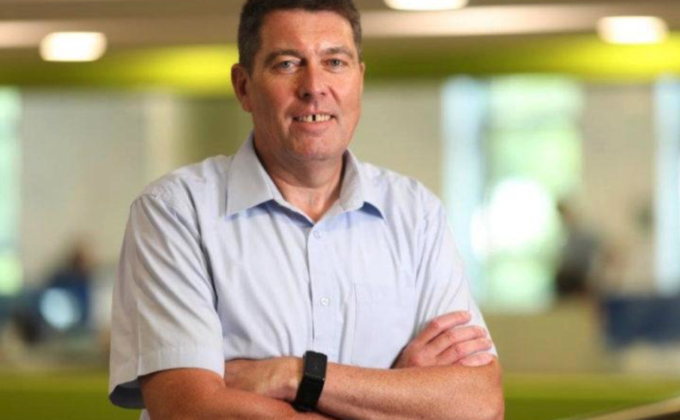| Joe Walsh. Image: Siemens Ireland |
READ STORY ORIGINALLY PUBLISHED AT SILICONREPUBLIC.COM
Like every other aspect of life and society, Covid-19 has changed the face of the buildings sector.
From employing sudden health and safety measures in the first few months of the pandemic to reimagining the workplace to suit the needs of remote and hybrid working, buildings are going through a seismic shift.
With office spaces slowly preparing to welcome employees back to some of their pre-pandemic work habitats, the use of automation to redesign and recalibrate buildings to suit the needs of its inhabitants has emerged as the primary driver of change.
Data can be used by buildings to enhance user experience in the same way other smart technologies do. And with the elimination of non-productive travel time as a result of remote working, buildings will have to do more than just open to ensure they provide value to those who return to office.
Joe Walsh, who leads the building technologies business unit at Siemens Ireland, said that measures that are now commonplace such as social distancing and hygiene can be greatly supported by smart technologies. This includes new systems such as role profiling, temperature-checking and desk management.
“Customers have been speaking to us about enabling hybrid working, the shifting use of office buildings into collaboration hubs and generally around reassessing the amount of corporate real estate needed, with some setting plans to reduce footprint by up to 30pc while serving the same number of employees,” he said.
“This will require detailed real-time and historic data to understand demand and usage and to ensure employee satisfaction is not impacted.”
Automation and the next normal
The use of digital technology in buildings has made them more controllable, better monitored and increasingly responsive.
The sudden changes in office design when the pandemic started made building managers realise the importance of flexibility. Internal needs such as changes in team sizes, nature of work and the potential requirement of more project and innovation spaces are also demanding flexibility in building management.
According to a Siemens Ireland report on trends in the Irish building market, new digital tools such as integrated project design and building information modelling (BIM) are becoming increasingly common in construction.
The report said that BIM, or the process of creating and managing information on a construction project across the project lifecycle, is the most applied tool. The public sector is expected to insist on the application of BIM.
“All the large companies recognise this and are investing to increase their level of competence,” the report said.
However, it also found that advances such as digital twins and augmented reality are still viewed as in the early stages of adoption with little evidence of significant investment.
“Ultimately we want to get to a building that has a digital infrastructure robust enough to collect and amass building operational data, provide connectivity needed to analyse, learn from it and share it and ultimately leverage it for the benefit of the broad roster of stakeholders,” said Walsh.
He said that buildings of the future will be called to account on numerous fronts including enhancing user experience, reducing energy usage and environmental footprint, and controlling costs of operation.
“This won’t happen by throwing technology at buildings, chasing bells and whistles down blind alleys in the hope that more equals better. Instead, it will demand taking a step back, assessing needs first and then moving ahead deploying the digital tools that will truly transform buildings and their role in the built environment.”
A smart choice
In a bid to make the return to offices add value to workers, inclusivity will have to be a key consideration for building owners.
Siemens Ireland’s report found that there is a general reluctance to embrace innovation in the sector because of limited knowledge on how technology can be applied and a ‘wait-and-see’ approach.
Cost, time and production capacity are still given precedence over life cycle efficiency and sustainability by many customers, with a lack of zeal for committing and investing early.
Growing cybersecurity threats corresponding with the pandemic are also a concern. There has been a rise in the number of entry points into a company’s systems, exposing them to significant risk.
The report said the key to developing smart buildings will be to employ suitably qualified people or partners who are empowered by top management to participate with senior stakeholders throughout the design, construction and test or handover stages.
It added that integration of hardware and software in building technology with internet of things sensors and intelligent controls will continue to grow. It could also reduce costs as a result of predictive rather than reactive decision-making.
Walsh said that office workers across all generations want more collaborative, user-centric workspaces to unleash their full potential. User-centric offices increase productivity because employees are healthier, collaborate more easily, manage time more efficiently and feel accomplished.
He added that beyond just productivity benefits, user-centric offices also help companies secure future talent while non-movers risk losing the war for talent.
“A prerequisite is including long term sustainability as a central element at design-stage and ensuring this remains a top priority during procurement and construction stages.”
MORE NEWS ON
|
LEARN ABOUT MIT’s NEW INNOVATION HUB: INNOVATIONHQ |

